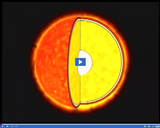
Temperatures can reach 15 million degrees Celsius at the center of the sun.
- Subject:
- Science
- Provider:
- Utah Education Network
- Author:
- Visual Learning Company
- Date Added:
- 02/28/2010

Temperatures can reach 15 million degrees Celsius at the center of the sun.

The sun is the center of the solar system around which Earth and the other planets orbit. The planets travel in an ellipse around the sun.
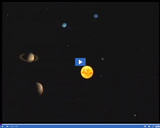
The sun is the center of the solar system around which Earth, the other plants, and their moons revolve. Inertia causes planets to remain in motion. The pull of gravity between the sun and planets keeps the planets from flying off into space.
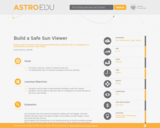
It is very dangerous to look directly at the Sun, even briefly. In this craft activity, you will create a safe viewer so you can look at the Sun without damaging your eyes.
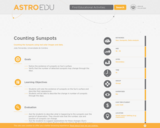
Using solar images and date obtained from Astronomical Observatory of the University of Coimbra lets you study the sunspots and their behaviour over days.

Students will explore the relationships and patterns among the Earth, Sun, and Moon system in our solar system. Students will design, build, and test a model of a lunar rover.
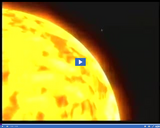
The sun is huge compared to Earth. About one million planets the size of Earth could fit inside the sun.
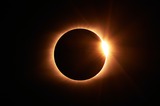
Students will learn about interactions between objects in the solar system that influence phenomena observed from Earth. This includes both solar and lunar eclipses. They will develop and use a model of the Sun-Earth-Moon system to describe the eclipses of the Sun and Moon.
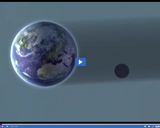
A lunar eclipse occurs when Earth is directly between the moon and sun. In a lunar eclipse the Earth casts a shadow on the moon, causing part or all of the moon to darken to an orange-red color.
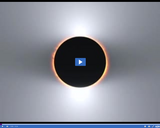
A solar eclipse occurs when the moon passes between Earth and then sun, causing the sun's light to be totally or partially blocked by the moon, casting a shadow on a portion of Earth.

The nebular theory states that the solar system was formed by the collapse and flattening of a nebulae due to gravity. This led to the creation of the sun, planets, and other components of our solar system.

The sun is the central point around which all planets in our solar system travel.
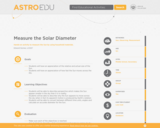
The Sun moves across the sky at an approximately constant rate because of the rotation of the Earth. By measuring how fast the Sun moves, you can work out how big the Sun appears in the sky. All you need are some household items and about 30 minutes on a sunny day.
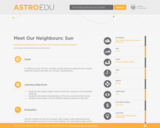
Converting the visual to tactile experience, this activity let visually impaired students to learn and explore about our star, Sun, and its main characteristics.

In this Night Sky Activity, students use a simple indoor Earth-Moon-Sun model to explore and learn about Moon phases and eclipses. Many children (and adults) have misconceptions about what causes the phases of the Moon, and helping them confront those misconceptions with evidence makes this activity pretty enthralling. While it’s pretty easy to see the phases of the Moon in the sky, it’s not possible from our perspective to observe the entire system, which often leads to inaccurate explanations of what’s going on, most commonly that Moon phases are caused by Earth’s shadow. It’s a perfect situation to use a scientific model. Students are challenged to use the model to struggle to figure out, develop understanding of, and explain the phases of the Moon, discuss ideas with others, then adjust their ideas based on evidence from the model. This activity usually includes a lot of big, “aha’s!” as participants encounter evidence while using the model that often contradicts what they previously thought was going on.

It can be hard to make learning about the night sky student-centered, but that’s what this activity does: students trade and discuss cards, then take charge of finding and pointing out the different objects. When an object is found, the instructor may share some interesting information to feed students’ curiosity, but the primary focus is on students finding, wondering about, and discussing different objects.
During this activity, students try to find and discuss a variety of items during a night hike, such as, “evidence of an amphibian (frog croaks),” puzzlers that they’re challenged to figure out, such as “the fastest thing in the Universe” (light), and items from the night sky, such as “a natural satellite of Earth” (the Moon), or “something bigger than our Sun,” (other stars).
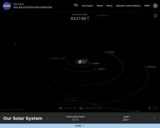
Explore the celestial objects of our Solar System (planets, comets, spacecrafts, etc...) using this interactive website.

The moon revolves around Earth, which together revolve around the sun. It takes Earth 365 days to make one revolution.

An introduction to astronomy written with a historical perspective.
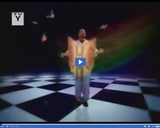
My Shadow, written by Robert Louis Stevenson, illustrated by Ted Rand. An illustrated version of the poem in which a child describes her relationship with her shadow.